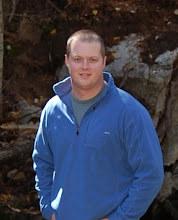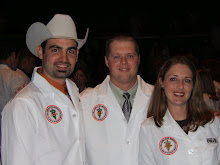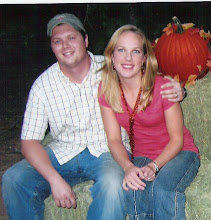My dad and I run about twenty head of registered beefmaster cattle. Dad makes most of the breeding and feeding decisions while my role has traditionally been more along the lines of manual laborer. However, upon graduation my role has expanded to include veterinarian and herd health consultant as well. It is in this fashion that I find myself down at the barn after work one day, about to attempt a cosmetic dehorn on a yearling bull. In veterinary school I was able to perform half of this procedure, removing one horn on a calf while a classmate removed the other. For some reason I decide that I am ballsy enough to duplicate the procedure on one of Dad’s herd sire prospects.
A cosmetic dehorn consists of first deadening the horn base with lidocaine, incising around the horn with a scalpel, cutting the horn from the head, removing a portion of the skull around the horn base, then suturing the incision closed. The purpose of this is to make the animal appear polled, or as if the animal was born naturally without horns. It also heals much faster than if the wound is left open, as with traditional dehorning. Both are particularly desirable with show animals. In this case, my dad wants to put this particular bull in a registered sale and hopes that the procedure will improve his appearance and thus increase his value.
So as I set out the tools and instruments that I will need to perform the surgery, I try to remember all of the steps of the procedure. It has been over a year since I did this in vet school, and that animal didn’t have horns nearly as large as the pair in front of me. You know, I don’t feel quite as ballsy anymore. Actually I feel a bit green. Must have been something I ate.
Dad puts a halter around the bull’s head and ties him around to the side of the chute. As he shaves the hair off the head and begins scrubbing around the horns with surgical scrub, I draw up a syringe full of lidocaine. I then make a series of injections around the base of the horn. The bull fights against its restraints and a surprising amount of bleeding occurs with each needle stick. I don’t remember the one in school bleeding this much. Off to a stellar start! Afterwards, I test the skin to make sure it is deadened by pricking the area with the needle. The bull doesn’t move a muscle.
“Ok, Dad, here we go,” I say, picking up the scalpel blade.
He stands off to the side and says, “Just let me know if I can do anything to help.”
I begin by making an elliptical incision around the horn, making the apex of each arc several inches above and below the horn itself. Blood pours from the cuts, running down the side of the bull’s face and begins to drip into a pool on the ground below its head. The base of the bull’s horn is bigger than my fist, too big in diameter to remove with the dehorning tool, so I am forced to saw through the base with a wire saw. I angle the cut to remove the horn and the portion of the skull that makes up the base of the horn, shaping the head into a more aesthetically pleasing form. This is a lengthy process and my arms are aching from the repetitive back and forth motion by the time the horn finally falls to the ground. Fortunately, the bull remains calm and sedate through it all, my local anesthetic making this a pain-free experience. With the horn removed, blood now spurts freely from the severed arteries, arcing several feet in the air before splattering against my coveralls in crimson stains.
“Give me a second to pull those bleeders,” I tell Dad, “and it will get a whole lot less gory around here. But I’m sending you my dry-cleaning bill, FYI.”
“Sure, and I’ll send you the bill on your room and board for the first eighteen years of your life,” he replies. He is standing quite a bit further away now than he was a few minutes ago, eyeing the bleeding speculatively. “But less bleeding sounds good to me.”
Dad has ran cattle long enough that he is used to the amount of blood involved with the dehorning process, but he has to be a bit apprehensive. I know I am, as this is the first time I have attempted this procedure on my own and nobody will be able to bale me out if a complication occurs. Why did I think I could do this again? I could be siting in the house playing X-Box, but no, I had to be the big shot vet helping out the old man. I’m such an asshole.
Hands shaking a bit, I take a pair of hemostats from the surgery pack. I grasp the severed end of each artery and gently pull, stretching the vessels out of the tissue until they break. The broken end recoils back into the tissue, which causes the artery to constrict thus stopping the hemorrhaging. This process takes quite a while and by the time I am finished, I have blood spray all over my face and hair. I bet I look like something from a slasher flick. Bwaahahahaha. I carefully examine the entire incision to ensure that I have stopped virtually all of the bleeding. The torrent of blood is now but a drip. However, I am now left looking at a hole in the side of the bull’s head big enough to burry my fist up to the wrist. A large lump appears in my throat and I swallow hard. That is one hell of a hole. I sure hope I can get this closed.
Dad looks at the gaping hole skeptically and asks, “That’s one hell of a hole. Are you going to be able to get it closed?”
“I was wondering the same thing myself, to be honest,” I say sheepishly.
“That doesn’t just fill me with confidence,” Dad says.
I take the scalpel blade and begin freeing the skin edges from the bone, making it possible to stretch the edges of the incision over the gap in the skull. Taking a pair of clamps from the surgery pack, I hold the edges together.
“It’ll be a bit of a stretch, no doubt,” I say, “but I’m pretty sure it will work. I’ll need you to help me keep tension on the suture as I sew.”
“Whatever I can do to help,” Dad replies.
Taking a large, curved needle and a long length of suture, I begin to sew. The hide of the bull’s head is close to half an inch thick and it is a tedious process to push the needle through both sides of the incision.
“That stuff’s pretty tough, huh?” Dad asks.
“Yeah, it’s like sewing through leather or something,” I reply sarcastically.
“Ok, smart ass, just watch where you’re going with that thing,” Dad says as he holds tension on the suture line. “I’d just as soon you didn’t make my hand a permanent hood ornament.”
“You mean you don’t want to be blood brothers to this guy,?” I ask, still finding sarcasm an appropriate outlet for my tension.
“I think I’ll pass,” he says.
By the time I tie the final knot in the suture line, the sun is sinking rapidly to the west. There isn’t enough daylight left to remove the other horn. We’ll have to finish another day.
“Well, I guess you could always market him as a unicorn,” I say as we release the bull from the chute and he trots away, his lopsided head held high in the air. “Hope the other bulls don’t make too much fun of him.”
“I think he will look pretty good if we can get the other side to match,” Dad says appreciatively.
“Yeah, that’s the tricky part,” I say.
Dad just looks at me, “You mean what you just did was the easy part?!”
_____________________________
A few days go by before we have the time to finish the surgery and remove the other horn. The process goes smoothly, without complication. When we are finished, Dad and I stand back and eye the bull’s head critically.
“Well, Dad, what do you think,” I ask.
“Looks good, son,” he says. “You did a good job getting both sides to look symmetrical. If you want, I’ve got several others you can do next.”
“I hope their horns are a bit smaller than this one,” I say with alarm.
“Yeah, he was almost too big,” Dad agrees. “No, the others will be smaller. But as good a job as you did with this one, I think you ought to start advertising this service at the clinic. Nobody else around here can do that any better.”
“I’ll talk to Dr. E and Dr. L about it tomorrow,” I say. I don’t think they do too many cosmetic dehorns, so they might be agreeable to that.”
The other veterinarians saw my work when we took the bull in for a breeding soundness exam and were both suitably impressed. They agreed to add the procedure to our list of services. Over time I made a few changes to my technique, which reduced the operating time significantly. I also purchased a human osteotome, a kind of chisel used by orthopedic specialists and plastic surgeons to shape bone. This allowed me more freedom in shaping the skull and led to more cosmetic results. I soon begin performing cosmetic dehorns fairly regularly on show cattle for the area FFA and 4H kids and I have my first marketable skill that is unique from those offered by my colleagues.







dry cleaning bill (aka-my wife)....i think that i got the short end of the stick here.
ReplyDeleteI wish there were pictures, great story, Colby!
ReplyDelete